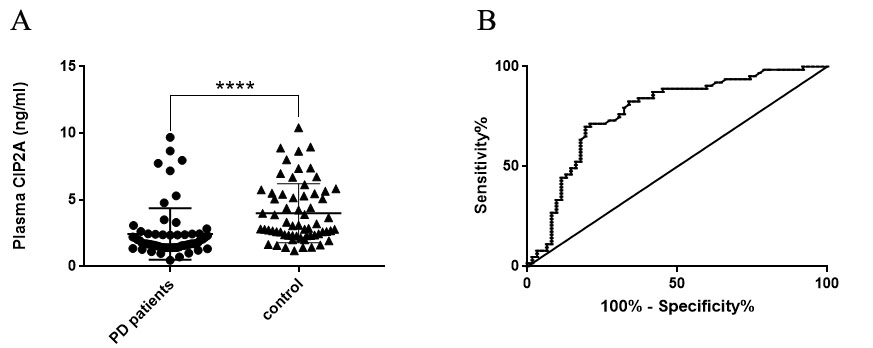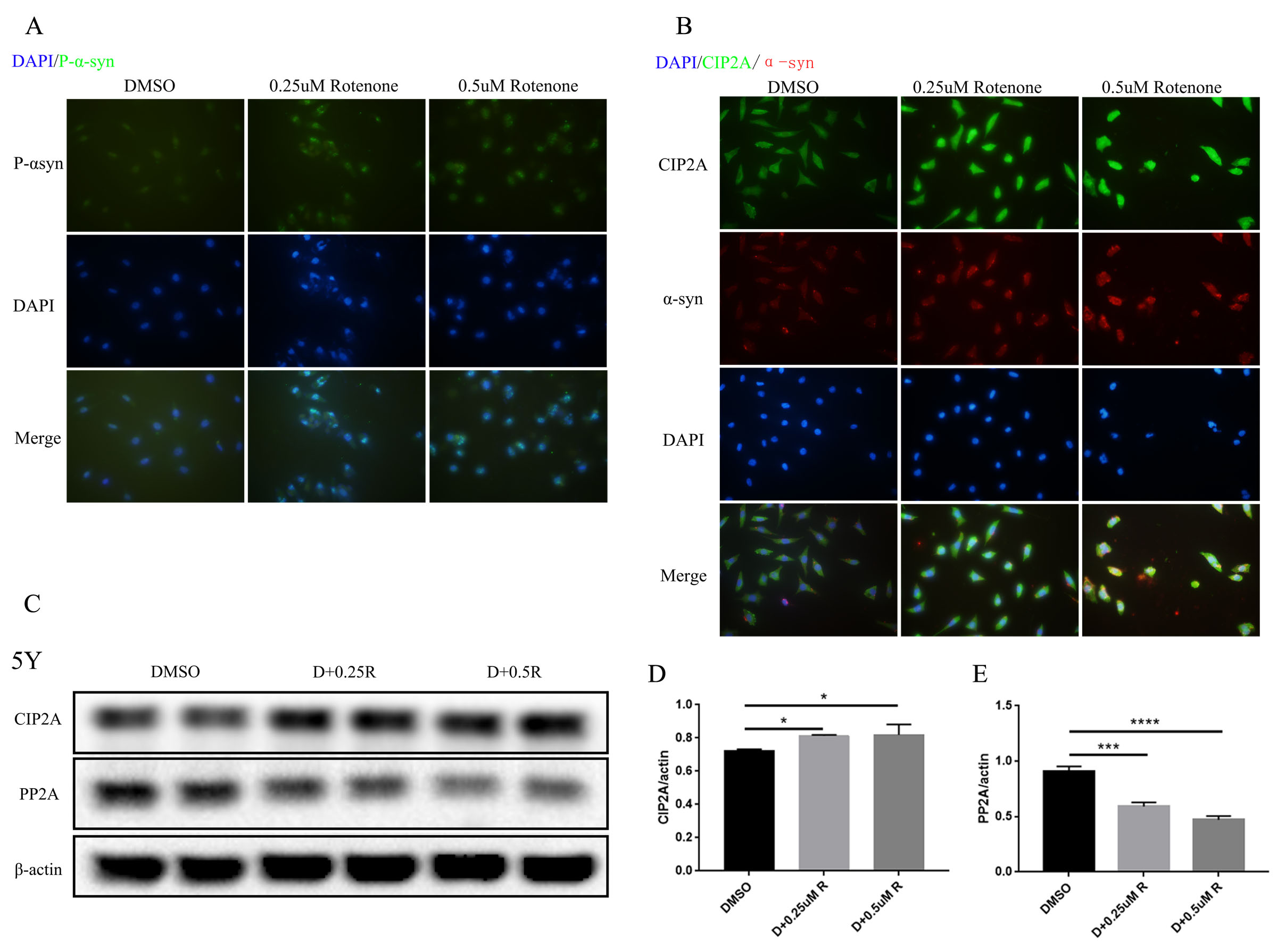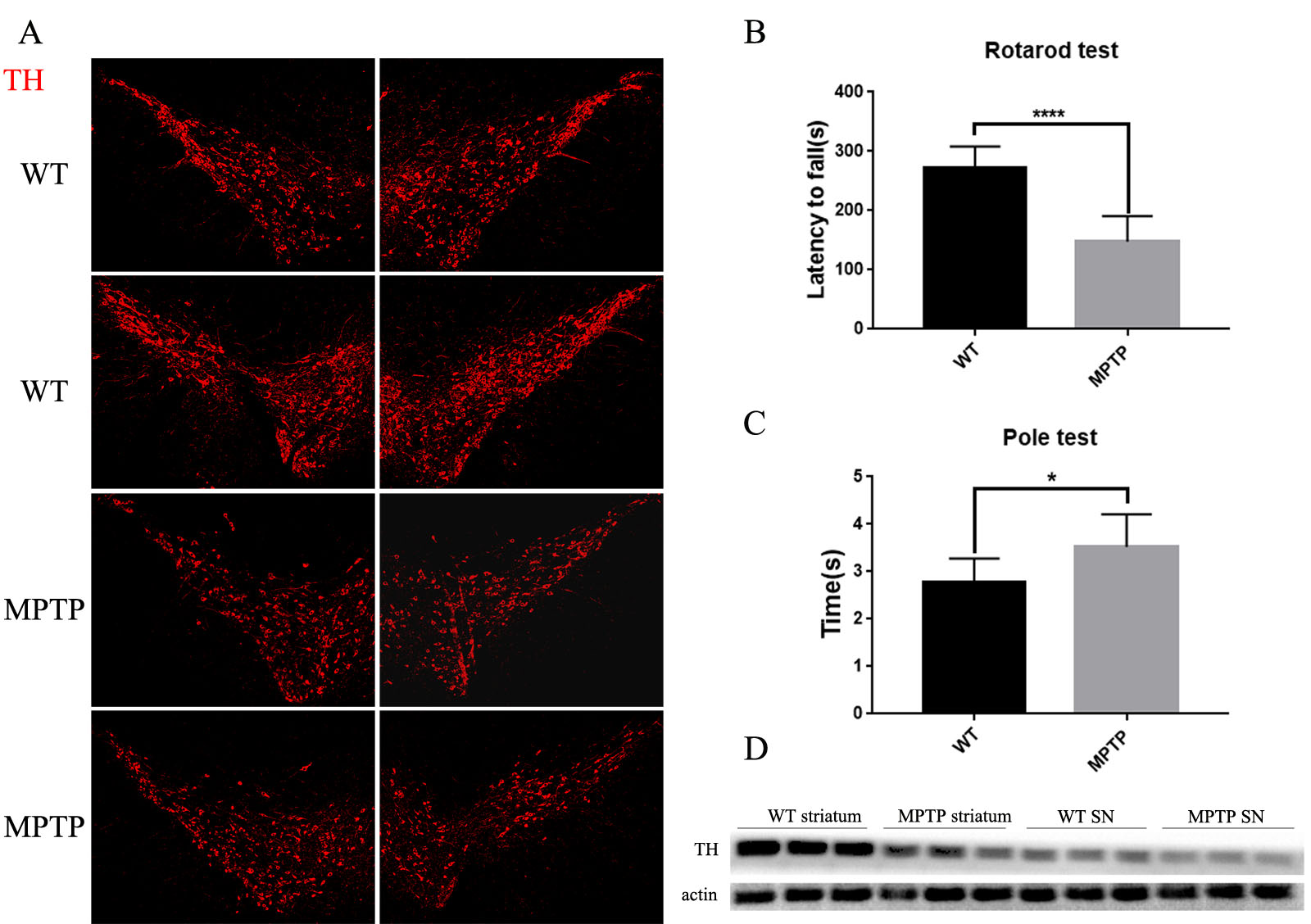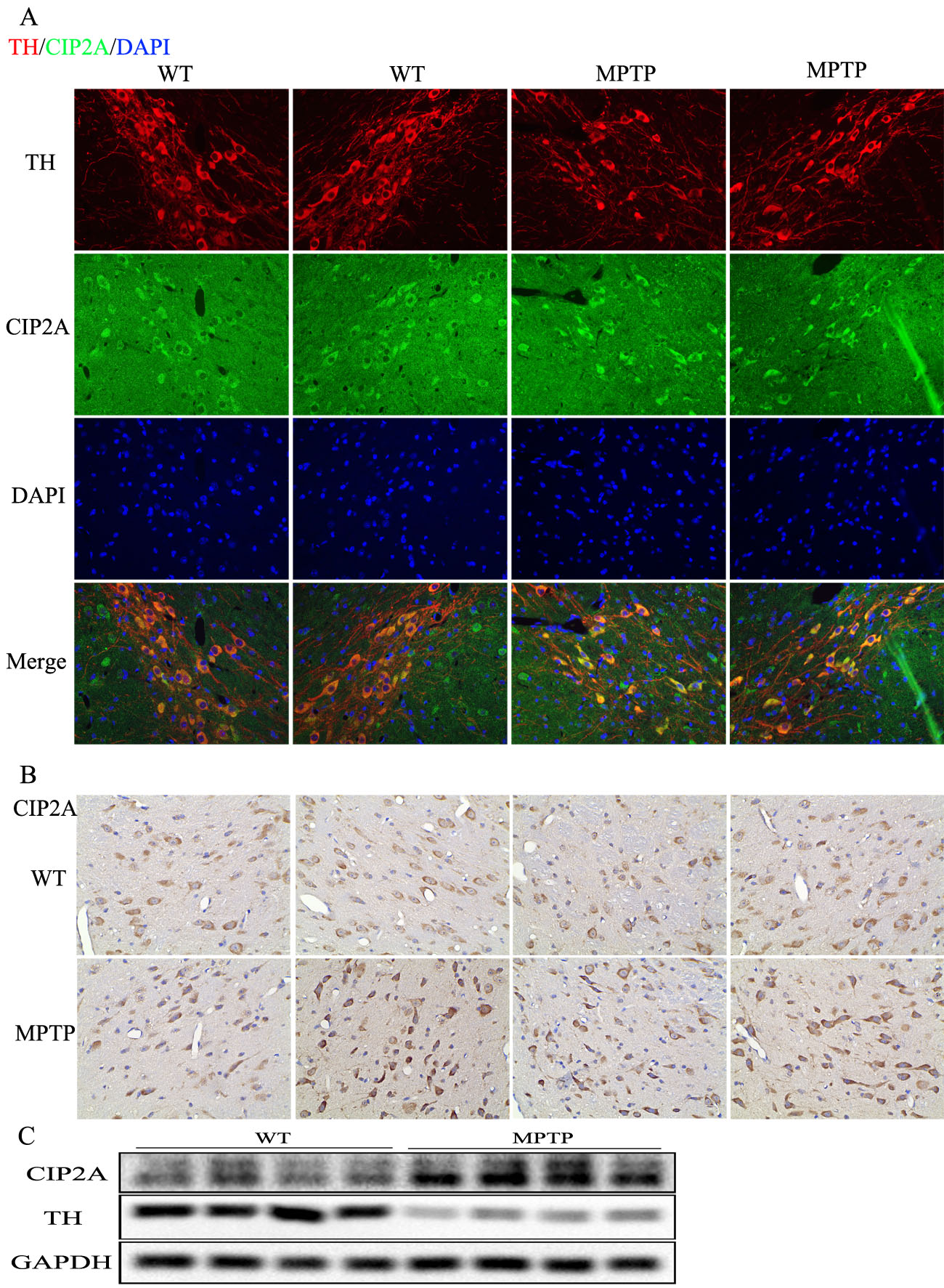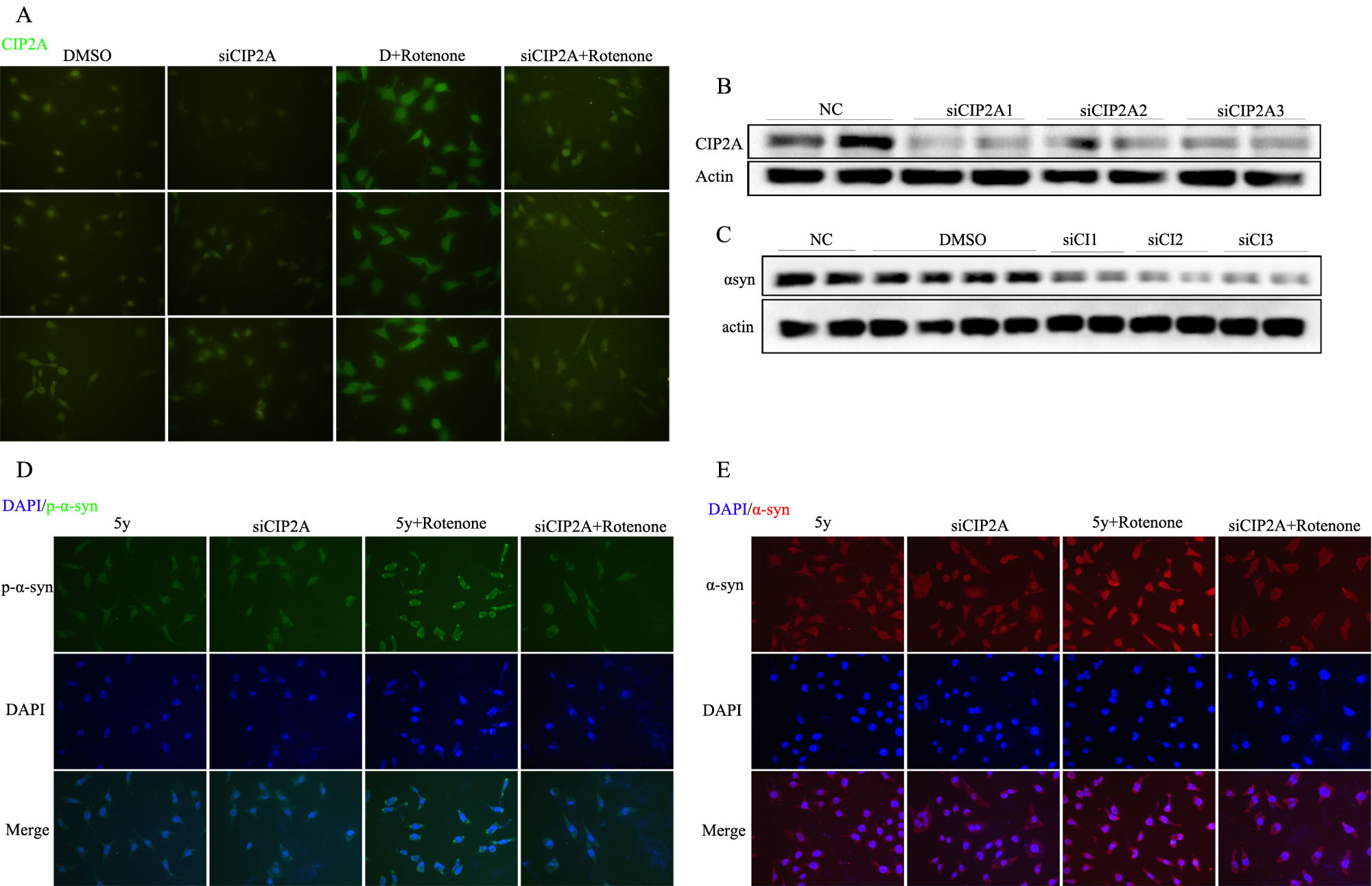Objective: To investigate the expression level of Cancerous Inhibitor of Protein phosphatase 2A (CIP2A) in Parkinson’s disease (PD), and explore the relationship between CIP2A and the pathology of PD.
Background: PD is a prevalent and incurable neurodegenerative disease. It brings huge social costs, and urgent treatments are needed to slow down or stop the process of the disease. Inhibition of phosphorylation of α-synuclein has been identified as a key initiative for the alleviation of PD-related pathology. Protein phosphatase 2A (PP2A), an important serine/threonine phosphatase, plays a critical role in catalyzes α-syn dephosphorylation. In this study, we describe an endogenous inhibitor of PP2A, Cancerous inhibitor of PP2A (CIP2A), which can inhibit the activity of PP2A and may exacerbate pathological changes of PD.
Method: Plasma CIP2A concentrations were measured by a quantitative ELISA for patients with PD, and age- and sex- matched healthy controls. The relationship between CIP2A and clinical motor or non-motor symptoms were assessed via correlation analysis. Immunofluorescence, immunohistochemical staining and Western Blot were used to compare the differences of CIP2A expression before and after modeling of PD. Three siRNAs were designed and synthesized to knock down the expression of CIP2A, and observe the effect of knockdown CIP2A on the pathology of PD.
Results: Our data show that plasma CIP2A levels in patients with PD were significantly lower than those age- and sex- matched controls (2.448 ± 0.2448ng/ml, n=62 VS 3.995 ± 0.2792ng/ml, n=63, respectively; P<0.0001)[figure1], the plasma CIP2A concentration of PD patients had a weak positive correlation with their MMSE, MoCA, and HAMD scale scores, and there was no significant correlation with UPDRS-III and HAMA scale scores. Moreover, CIP2A is overexpressed in PD cell model[figure 2] and MPTP-induced mouse model[figure 3 and 4] of PD. Importantly, transient knockdown of CIP2A expression in SH-SY5Y cells can cut down rotenone induced PD-like damage, like the lower expression of α-syn and phosphorylated α-syn[figure 5].
Conclusion: Compared with healthy controls, the plasma CIP2A concentration in PD patients is significantly lower, it may be a potential diagnostic biomarker for PD patients. Moreover, identification of the potential mechanism of CIP2A in PD may pose a surprising possibility, making CIP2A a candidate target protein for future PD therapeutics.
To cite this abstract in AMA style:
S.J Yin, C. Han, T. Wang. Cancerous inhibitor of protein phosphatase 2A in Parkinson’s disease [abstract]. Mov Disord. 2020; 35 (suppl 1). https://www.mdsabstracts.org/abstract/cancerous-inhibitor-of-protein-phosphatase-2a-in-parkinsons-disease/. Accessed December 20, 2025.« Back to MDS Virtual Congress 2020
MDS Abstracts - https://www.mdsabstracts.org/abstract/cancerous-inhibitor-of-protein-phosphatase-2a-in-parkinsons-disease/

